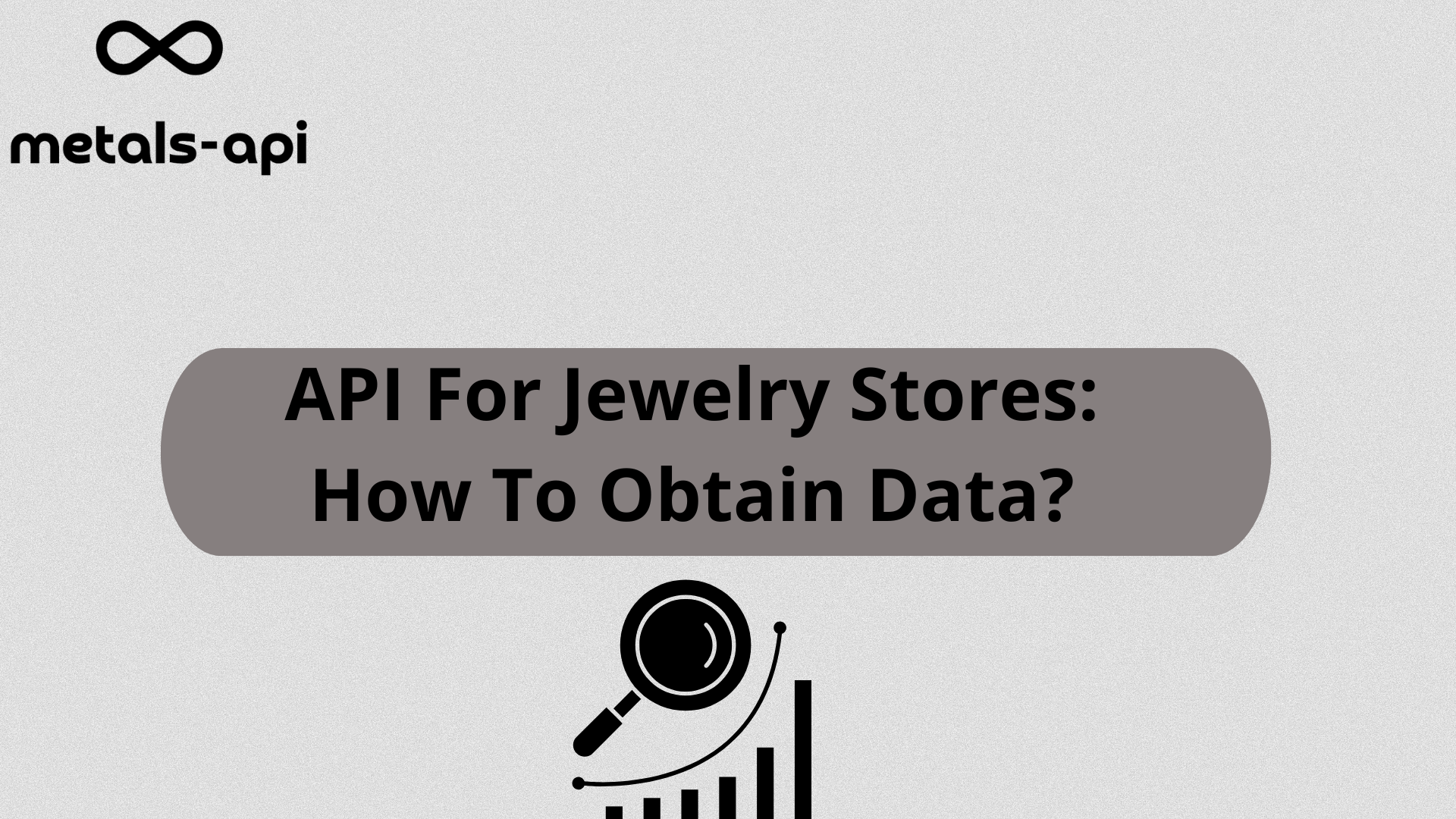API For Jewelry Stores: How To Obtain Data?

APIs (Application Programming Interfaces) have become invaluable tools for jewelry stores, providing access to accurate and real-time data essential for informed decision-making and staying competitive in the market. In this blog post, we'll delve into the process of obtaining data through an API specifically designed for jewelry stores, highlighting key steps and considerations.
Choose the Right API Provider: Metals-API
The first step in obtaining data through an API is to choose the right provider like Metals-API. Look for API providers that specialize in jewelry industry data and offer comprehensive features such as real-time pricing updates, market analysis tools, inventory management integration, and data security measures. Evaluate the provider's reputation, reliability, and customer support before making a decision.
API Integration:
Once you've selected Metals-API, the next step is to integrate the API into your jewelry store's systems. Work closely with your IT team or a qualified developer to ensure seamless integration with your existing software, such as inventory management systems, pricing databases, and e-commerce platforms. Follow the API provider's documentation and guidelines for integration.

Obtain API Access Credentials For Metals-API
After successful integration, you'll need to obtain API access credentials from the provider. This typically includes an API key or authentication token that allows your systems to communicate securely with the API server. Keep these credentials secure and follow best practices for API key management to prevent unauthorized access.
Define Data Requirements:
Before querying the API for data, define your specific data requirements. Determine which types of data are essential for your jewelry store, such as real-time metal prices, market trends, historical data, inventory levels, customer insights, or pricing analytics. Clearly outline your data needs to extract relevant information effectively.
Query the API for Data:
Once your data requirements are defined, use API endpoints and query parameters to retrieve the desired data. Metals-API for jewelry stores offer endpoints for metals pricing, market analysis, inventory updates, and more. Construct API requests based on your defined parameters, such as metal type, pricing date range, market trends analysis criteria, or inventory status.
This is an API Response by Metals-API
{"data":{"success":true,"timestamp":1707937620,"date":"2024-02-14","base":"INR","rates"Handle API Responses:
As you query the API, handle the responses returned by the API server. API responses typically come in JSON or XML format and contain the requested data fields. Use programming languages or tools to parse and process API responses, extracting relevant information and formatting it for display or further analysis.
Data Validation and Quality Assurance:
Ensure that the data obtained through Metals-API is accurate, reliable, and up-to-date. Implement data validation checks to verify the integrity and consistency of the data received. Perform quality assurance tests to identify any discrepancies, anomalies, or errors in the data and take corrective actions as needed.
Monitor and Maintain API Integration:
Continuously monitor Metals-API performance, data accuracy, and system compatibility. Set up monitoring tools or alerts to track API uptime, response times, and data freshness. Regularly review API usage metrics, such as request rates and data volume, to optimize performance and ensure compliance with API usage limits.
Conclusion:
Obtaining data through Metals-API for jewelry stores involves choosing the right provider, integrating the API into your systems, obtaining access credentials, defining data requirements, querying the API for data, handling API responses, validating data quality, and monitoring API integration. By following these steps and best practices, jewelry retailers can harness the power of APIs to access accurate metals data, gain valuable insights, and drive business growth.